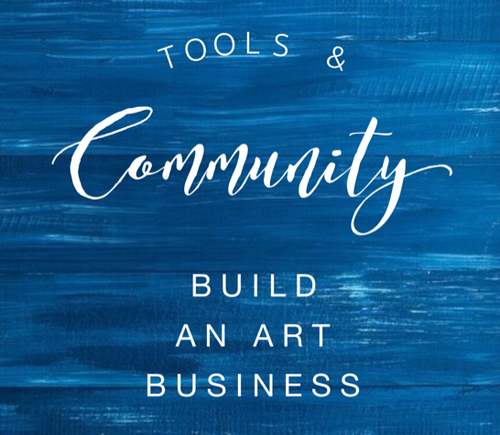by guest blogger Jennifer Orbom
No business person succeeds alone. Like all those with an aim to expand their business, working artists must build their own communities, extend their professional goals, and systematize collaboration.

When we build communities and define and pursue goals, we take charge of the direction of our business. When we start to collaborate, our relationships deepen, our partnerships broaden, and our combined ability to assist each other increases exponentially.
Professional artists are essential members of society: they contribute to GDP, revitalize neighborhoods, and are critical to social, civic and business innovation. They give voice to our concerns, and add beauty and meaning to our lives. Yet only 30% of them support themselves through the creation of their art. In today’s art business, everyone profits except the artists. Artists are not treated like CEOs of their own businesses, and oftentimes, they don’t see themselves as such.
The irony is that artists are uniquely positioned to persuade an audience. Their job is to communicate, to create wonder, and to balance advocacy and freedom. They are naturally inclined to excel at marketing and sales. Likewise, they routinely map out and implement complicated projects requiring engineering, vendor management, logistics, and all kinds of other “business” issues.
Preparation mitigates risk. Without risk, no art is made. Yet artists learn neither risk, nor reward management. They must be bookkeeper, strategic planner, logistics coordinator, visionary, marketer, manager and self-promoter, yet they are taught none of that. Instead, they are trained to believe they are incapable of it. Of course, this is ridiculous.
Gallerist Jack Morris shared a story that highlights the initiative it takes to manage your art business: Dean Mitchell worked as an illustrator for Hallmark greeting cards for a short while. He’d enter any art show—a sidewalk show in a mall, or one that was sponsored by a museum or art center—as long as it had a prize. Even though he’s now well established, and considered one of the top watercolorists in America, Dean still earns over $30,000 a year in this way—a $5,000 prize here, a $500 prize there—because he continues to treat his art like a business. When a gallery that represented Dean refused to publish his book because they didn’t want to make the chance investment, he published it himself. He has subsequently published a second book, and started a gallery in his hometown.
Dean serves as an example of an artist managing his business with extraordinary results. While there are as many definitions of success as there are artists, the fact is that if your work is your art, you are trying to be strategic—you’re grappling with sales, marketing, and building a pool of potential buyers and collectors.
These things develop when artists utilize their community, and systemize collaboration. How do you track those who express interest in your work? Put their names and contact information in a spreadsheet and keep in touch with them with regularity. There are plenty of things you can do right now to propel the business.
Social media has changed the game for artists—getting our work in front of new contacts has never been easier. The challenge comes in utilizing this tool so it meets your needs. “One thing I don’t see enough artists doing is ‘social selling.’” explains Daniel DiGriz, marketing director of Clark Hulings Fund for Visual Artists. “That means prospecting within social-media sites such as Twitter, deliberately recruiting that audience, and telling an ongoing and overall story really well, punctuated with lots of content (e.g., photos, thoughts, etc.).”
Whatever hurdle you’re bumping up against has a solution, and the odds of overcoming it are improved when you’ve got tools and community who empower you—this support makes it easier to see past the hurdles, and moving on to what needs to come next. A well-developed community allows us to extend our professional goals, affords breathing room, and ultimately, gets us to where we want to be professionally.



Getting contacts in today’s economy is almost fruitless. If a community is deluged with artists what can you do? Maybe put on a show, drop the Hula skirt and put out your hand for a buck. If you teach painting your students are not buyers. Art is the last thing on anyone’s list. With prices on everything going up plan to put up more shelves in your art area to hold the paintings you are still working on.
I would disagree that a community filled with artists is not useful. An artist community has others who are serious about their work, and can offer feedback, opportunities, referrals, resources and more. Artists do not thrive in isolation. Not only are “artist referrals” one of the top ways that artists get in to galleries https://www.artsyshark.com/2012/07/12/top-10-ways-that-galleries-find-artists/, but artists can work in collaboration with their network to draw on their strengths.
If an artist doesn’t have good marketing skills, but is a really good photographer, they can trade those skills with another artist who is good at marketing but needs portfolio images. Artists often build Mastermind groups that discuss business strategies, act as accountability partners and more. Developing relationships with other artists is a great source of support.
It’s certainly frustrating for many people who aren’t making a lot of sales, and I don’t discount that. Every small business goes through difficulties, and can go in cycles.